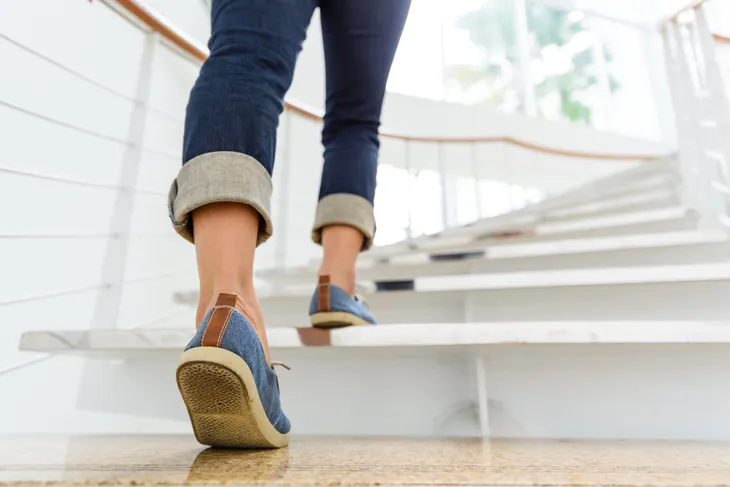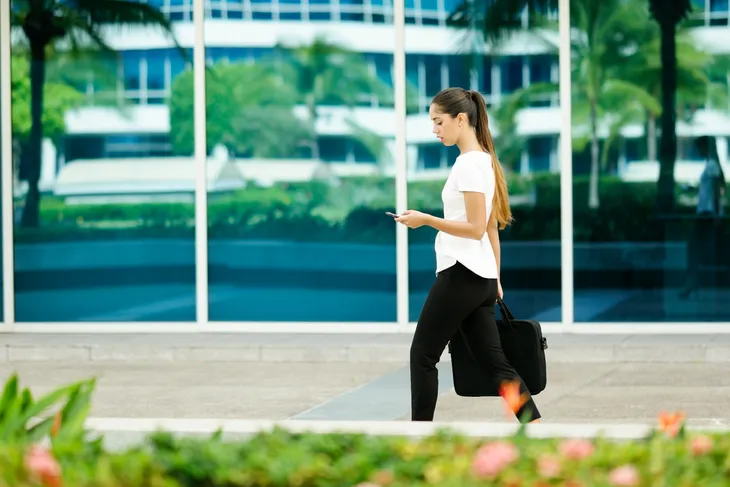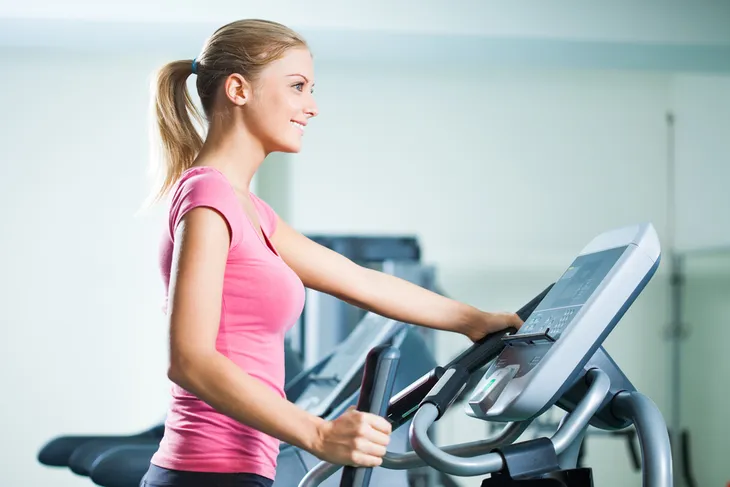The term “sedentary lifestyle” has been used a lot lately, probably because a lot of Americans have fallen into this category. The term basically means a lifestyle that has no activity, which can lead to cardiovascular issues, weight gain, obesity, and even depression. Sedentary lifestyle has also been called “sitting disease.”
However, for a lot of people, getting started is a tough one — they may be too comfortable in their own home, or have mobility issues limiting their ability to be active. However, getting exercise doesn’t always mean you have to be outside or in a gym. Here are six simple tips for leaving the sedentary lifestyle in the dust…
Use the Stairs
If your home or work has stairs that you avoid taking, then deciding to climb those stairs is a great step in overcoming inactiveness. VeryWell Health explains that studies have shown that stair climbing — which is actually categorized as “vigorous-intensity physical activity” — can burn more calories in a minute than jogging.
The same source points out that climbing the stairs expends up to nine times more energy than sitting, and seven times more energy than taking the elevator. And you don’t have to wait 5-minutes for the stairs to show up, like you do with elevators in some office buildings.
Stretch
The simple act of standing up occasionally and stretching can have benefits to help counteract your sitting disease. WebMD advocates something called NEAT, which is an acronym for non-exercise activity thermogenesis — and it includes stretching, turning, and bending.
The source recommends aiming for 10-minutes of NEAT per hour as a way to start moving towards bigger exercise goals. It says if you practice NEAT 5 or 6-times a day to stretch out all your cramped muscles, “you’ll start to notice a difference.”
Walk at Lunchtime
The Toronto Star says, “minimal exercise can counteract sedentary lifestyle,” explaining that “sitting is the new smoking.” However, it suggests the “five-minute restart,” which means if you’re working at desk in an office (or at home), walk around for a minimum of 5-minutes each hour to get a glass of water (or for no particular reasons).
Even better, use a portion of your lunch break to get outside and walk around, it adds. Not only will you get some fresh air and possibly release some tension, the article says that even a short walk before (eating) lunch can aid in digestion.
Walk and Watch
If you just can’t seem to miss your favorite shows that are gluing you to the couch for hours, then try to reach a compromise. For example, WebMD says you could dust off that old treadmill in the basement and set it up in front of your television, so you can walk at your own pace while being entertained.
If you’re one of the few people who doesn’t have a treadmill around they don’t use, then you can multitask while taking in your shows — think about tidying up the room while glancing at the set (or waiting until a commercial break), or even try marching on the spot. “Research shows that the longer you sit watching television, the greater your waist circumference, and the higher your risk of dying from cardiovascular disease,” adds the source.
Get Gardening
For many people, gardening is a relaxing and rewarding hobby, but it can also give you a pretty decent workout. “Any gardener can tell you just how much physical effort is involved in every kind of gardening activity,” notes VeryWell Health, adding that the American Heart Association classifies gardening as moderate-intensity activity.
From digging, to carrying plants, to seeding, to mowing, it all takes effort that’s not too hard on the body. You’ll also be outside, and you’ll be beautifying your property at the same time and taking pride in seeing the fruits of your labor (perhaps literally).
Leave the Car at Home
If you live fairly close to work, you could try walking or cycling to it. However, since those options are not realistic for many people because of distance or ability, you can apparently still get benefits from taking public transit instead.
VeryWell Health explains, “Even public transit seems to be associated with lower body mass index (BMI) than driving your own car to work.” A separate article from the same source explains this benefit is from walking to a station (and possibly using stairs) instead of driving, or just from the fact you may have to stand on public transit rather than sit in your car. There are also environmental benefits to ditching your car too.









